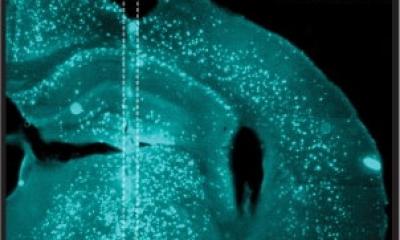The hubs and spokes of brain traffic
New insights into the ways the human brain functions – that is the promise of mapping the entire web of connections in the brain, the so-called connectome. New developments in connectome imaging are one of the major topics at this year’s European Congress of Radiology (ECR).


It was Dr Patric Hagmann, neuroradiologist at Lausanne University Hospital in Switzerland, and a US-based neuroscientist who in 2005 independently of each other suggested the term “connectome”. “The connectome is a comprehensive map of all neural connections in the human brain,” Hagmann said at the ECR 2014 opening press conference and added, “the connectome is for the brain what the genome is for the cell.”
In simple organisms such as a roundworm the nodes of the connectome network are the individual neurons. The brains of more highly evolved organisms – animals, humans – have too many neurons for all connections to be shown on the microscale. To map brain connectivity in vivo and dynamically on the macroscale MRI techniques such as diffusion tensor imaging (DTI) are being used. Tractography, the reconstruction of neural tracts based on DTI, has seen some progress recently, Hagmann explains: “It is now feasible to map a subject’s individual connectome at the millimetric level in a non-invasive and very rapid manner.”
Thus the neural tracts that connect grey matter regions can be modelled as a network of nodes and bends, and the effects of diseases on the network can be visualized. Hagmann is optimistic that his research discipline can help understand neurodegenerative diseases such as Alzheimer or amyotrophic lateral sclerosis or the biological triggers of neurological disorders such as autism and schizophrenia since all these diseases have one common feature: they reduce the connectivity in the brain. Hagmann likens brain connectivity to an air traffic network: “Areas in the brain are like airports of different sizes. You have small airports like Geneva, intermediate airports like Madrid and hubs like Heathrow. When there is a problem at a small airport, it will have a limited impact on the rest of the traffic. But when there’s a problem at a hub, there will be consequences for the whole network. It’s the same in the brain: Some diseases affect hubs, other intermediate or small areas, and the effects on the organism will differ accordingly.”
Connectomics, as Hagmann has dubbed the discipline of connectome research, may also help simulate brain activity. “The maps we created are already being used to design models of continuous brain activity,” Hagmann reports. At some point in the far future connectomics may well show to have clinical value, the neuroscientist predicts: “Connectomics will lead to a new understanding of brain physiology and disease mechanisms and it will open new ways to diagnose and characterize neurological disease.”
09.03.2014











